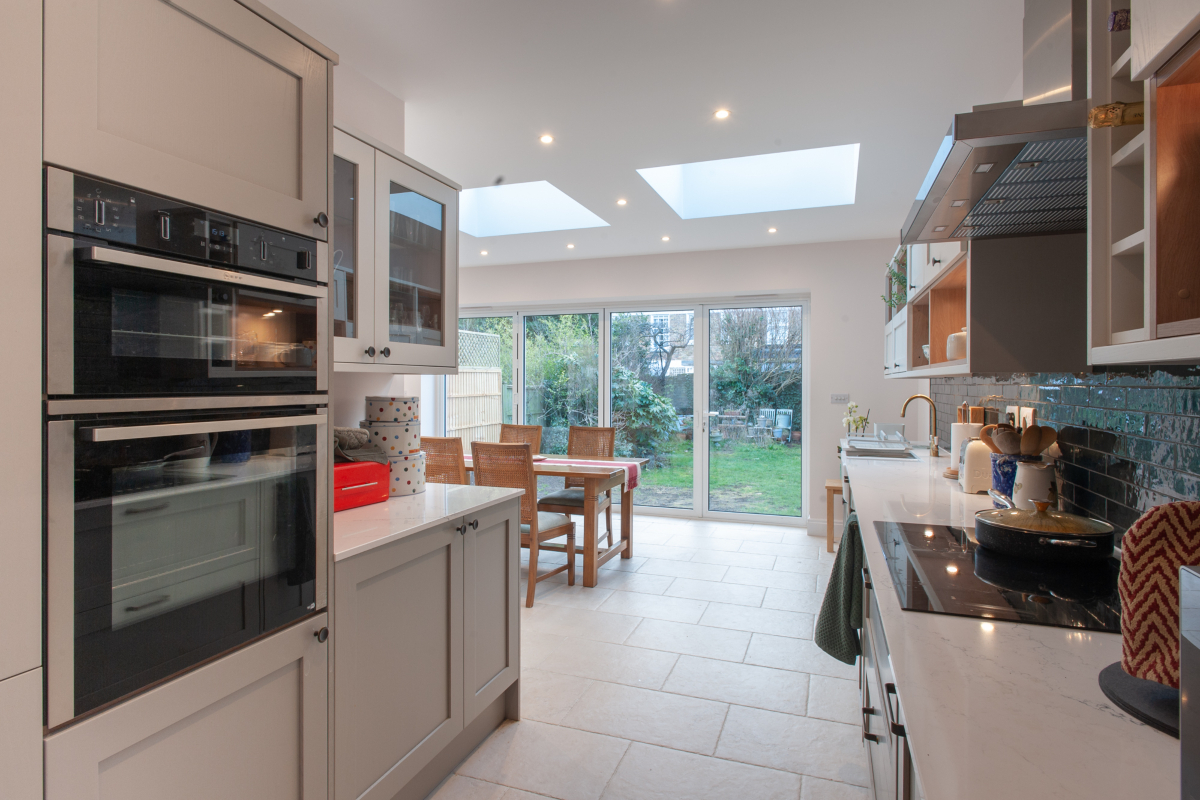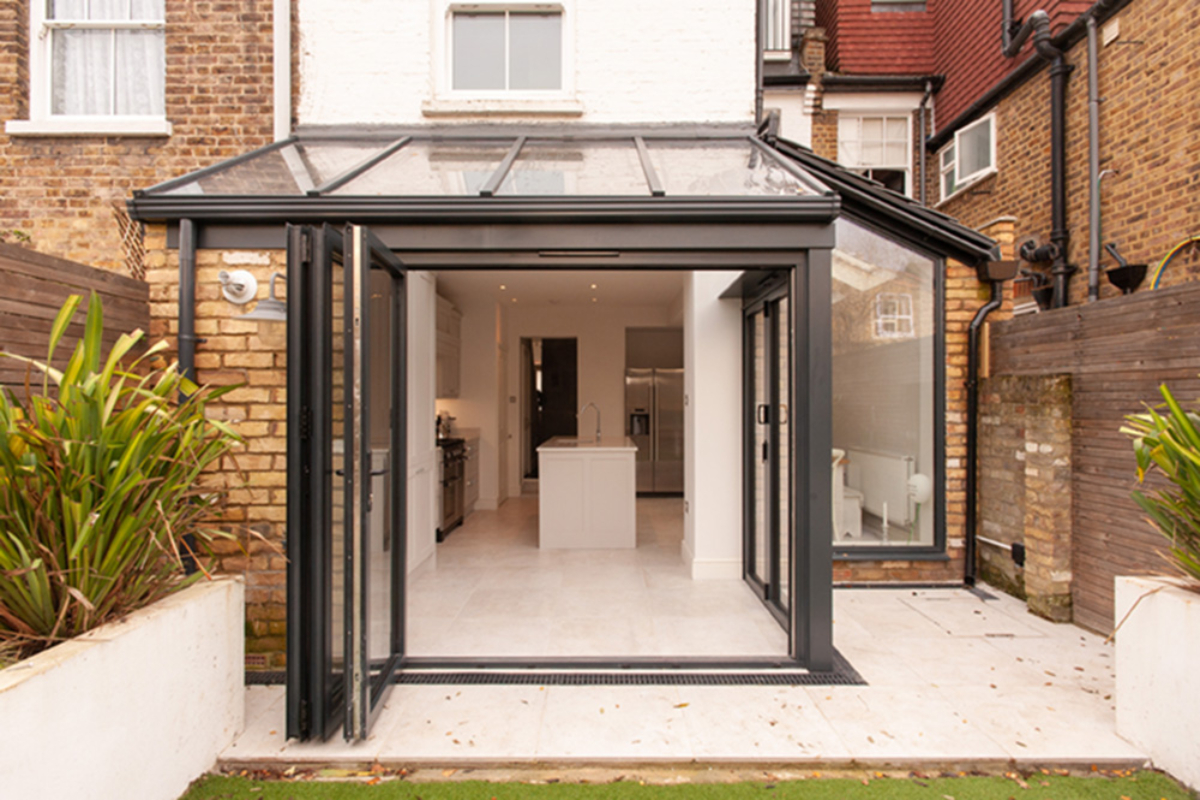Out of all home improvements, changing flooring is the worst. It is not like replacing furniture, or painting a wall. But, a considerably larger and more expensive project. Although hassle-free flooring extension is possible now, that too on a budget.
With many flooring options, it is easy to install your perfect living space. It includes tiled floor, cork, vinyl, solid wood, laminate flooring and a wide range of wooden flooring.
Before reading, you should know that there are no perfect flooring extensions. Every type is targeted to solve specific things. According to Sfgate, Wood was the common flooring since the Victorian era. It kept the house warm and made it look classic. But, it does not withstand moisture or severe treatment.
Flooring extensions vary with weather, location, material, and whether you have underfloor heating or not. To know a few famous floors, let’s get started. But if you’re looking for a personal solution, book a free session with us here.
WOODEN FLOORING EXTENSION

It was the most famous in the social spectrum of the Victorian era for a reason. While providing the classic looks, it lasts for a lifetime. Though renewable, it does contribute to global warming.
Solid wood can be made from oak, maple, mahogany to Purpleheart, Brazilian Walnut (Ipe), Brazilian Cherry, and Australian Cypress.
Advantage:
- Classic looks and flexible with any style
- Durable and strong
- Increases house value
- Improves air quality
- Ideal for living space
Disadvantages:
- A high price tag
- Not liquid friendly for long hours
- Vulnerable to scratches
- Shrinks and swells with temperature
- Bad for bathrooms or wet space
CERAMIC TILE

Created by a mixture of clay and shale, it is baked in a kiln similar to pottery. Generally a hard material in many shapes, colours, and patterns, some are not suitable for flooring.
It has many sub-categories based on the heating, glazed or unglazed. We have another explanation on it altogether. They are Glazed Ceramic, Porcelain, Terracotta, and Quarry Tile.
Advantage:
- Huge variety in colour, shape and pattern
- Customisable pattern with modern print technology
- Easy to clean
- Low Maintenance
- Suitable for kitchens and bathrooms
Disadvantages:
- Not suitable for cold region because poor insulation
- Hard underfoot and noisy
- Difficult to change if there is a crack
- Can be slippery
- Not the ideal choice for a bedroom
LAMINATE FLOORING EXTENSIONS

Just like the name, it’s a thin layer of plywood or compressed fibre over any surface. It is the quickest way to change your flooring extension. Just laminate the old one.
It can look like any other material with customisable modern prints.
Advantage:
- DIY for expensive flooring
- Harder compared to others
- Easy to clean
- A quick refurbish
- Suitable for kitchens, living space
Disadvantages:
- Slippery
- Possibility of damage under the layer
- Difficult to change, cannot be refinished
- Not as quiet as carpet
- Not for bedroom
VINYL

It is a multi-layered synthetic flooring, flexible and soft underfoot. Made from plastic, fibreglass, or PVC, it comes as plank, tiles, or sheets. Like laminate, it can mimic other looks with the customisable top layer.
Vinyl flooring comes in several forms that can be installed quickly. If careful, you can try the peel and stick tiles in a small area.
Advantage:
- Strong and resilient
- Soft and warm bare feet
- Customisable top layer
- Cheap
- Suitable for living space
Disadvantages:
- Not rich in variety
- Possibility of fake looks
- Not eco-friendly
- Noisy
- Does not add to house value
CARPET

It makes the perfect duo with wood, commonly used in bedrooms and living space. It is made with soft fibres, glued together on a sheet. Installed by nailing down, it is the softest flooring extension.
There are numerous categories based on the material of the soft fibre. Wool, nylon, acrylic, polyester, and polypropylene are few common ones.
Advantage:
- Soft and warm
- Quiet
- Slip-resistant
- Easy to install
- Suitable for living space and bedroom
Disadvantages:
- Difficult to clean
- Captures dirt
- Retains moisture, creating moulds
- Not suitable if you have allergy
- Never to be installed in kitchens and bathrooms
CORK

Sort of a layered flooring, made with the bark of certain trees. It can be a sustainable approach if trees are skinned after a good healing period. The bark is processed into sheets for usage.
You can either glue it on top of your old flooring or install it as a floating floor with click-lock edges.
Advantage:
- Resilient
- Quiet and warm
- Soft and Eco-friendly
- Easy to install
- Suitable for living space and bedroom
Disadvantages:
- Not for rough handling
- High maintenance
- Vulnerable to moisture
- Can be pricey
- Never to be installed in kitchens and bathrooms
With all that variety, you already know a lot. But keep in mind, these flooring extensions are not for every room. We suggest that you ask an expert in case you’re not affirmative about a type. Otherwise, go on and experiment. We are here if things go wrong!




